
Euphorbia trichadenia Photo by: Sándor Horváth
Origin and Habitat: S. Africa (Northern Province and Mpumalanga, northern KwaZulu-Natal), Botswana, Namibia, Zimbabwe and Angola.
Altitude range: 1300-1760 metres above sea level.
Habitat and ecology: Euphorbia trichadeniaSN|32337]]SN|32337]] occurs in open thickets near river, it also common in reed-beds along river banks, dry hills, river mouth, elevated hilly place, on sand mixed with a rich soil, flooded ground and grasslands. The geophyte Brachistelma incanum is often present the places where the E. trichadenia occurs in large numbers and grass cover is sparse, as this unpalatable species inhibits grazing of domestic stock. Other caudiciform plants commonly found growing in the same area are Ipomoea bolusianaSN|1008]]SN|1008]] Schinz and Pterodiscus speciosusSN|22819]]SN|22819]] Hook. Growths springing up after the vegetation has been burnt are very short stouter and less leafy and totally unlike those normally developed.
Synonyms:
See all synonyms of Euphorbia trichadenia
back
Accepted name in llifle Database:Euphorbia trichadenia PaxBot. Jahrb. Syst. 19(1): 125. 1894 [13 Apr 1894]Synonymy: 5
back
Description: Euphorbia trichadenia is a perennial herb with a large cork-like barked rootstock (succulent caudex) 12 cm long and 6-20 cm in diameter, producing annual thin herbaceous or woody prostrate or erect stems to 12 cm high, branching from the base. The leaves are narrow and acute, while the flowers, borne either singly in the forks of the branches or in terminal cymes of three to five, are pale yellowish in colour. The cyathia have leaf-like bracts and the involucral glands have fringed lobes. Euphorbia trichadenia comprises two varieties, in var. gibbsiae N. E. Br. the plant varies much in appearance and are much more hairy.
Derivation of specific name: This member of the Euphorbiaceae family was given this name by Ferdinand Albin Pax in 1894. The slender hair-like process of the nectar-glands unusually conspicuous for the genus; the specific name refers to these (from Greek 'trichos', hair and Greek 'aden', gland).
Rootstock (caudex): Tuberous, swollen, 7-12 cm long and 6-20 cm in diameter, narrowing into an underground elongated woody neck (stem), from which the thin aerial branches develop.
Annual stems: One to several, thin, herbaceous or woody prostrate to sub-erect, 2-12 cm high, branching from the base, puberulous (var. gibbsiae) or almost glabrous (var. trichadenia).
Leaves: Sessile, entire, opposite at the flowering nodes and forkings of the stem, alternate elsewhere. Blade thinly coriaceous or perhaps slightly fleshy, 2-10.5 cm long, 1-5 mm broad, linear-lanceolate, acute, apiculate at the apex, cuneate at the base, midrib prominent on the lower surface, usually slightly curved, often longitudinally folded, glabrous on both sides, sometimes ciliate on the narrow cartilaginous margins. Lowest leaves and sometimes those under the involucres (bracts) much smaller, lanceolate, linear-lanceolate or scale-like. Stipules filamentous, 0.5 mm long, quickly deciduous.
Flowers (cyathia): Solitary in the forkings of the stems or sometimes 3–5 in small terminal cymes with rays to 6 cm long, not forking. Bracts leaf-like. Cyathia shortly pedunculate (peduncle less than 3 mm long), to 5 mm long and 8-10 mm across, with funnel-shaped to cup-shaped, involucres, glabrous or minutely puberulous outside, with 5 glands and 5 transversely rectangular or subquadrate fringed lobes. Nectar glands 2-3 mm long, 1.5-5 mm broad, transversely elliptic, palmate or somewhat fan-shaped, inner margin raised, outer margin deeply divided into 3–10 linear or filiform segments 1.75-3 mm long, once or twice forked at the apex, flat or channelled but not corrugated on their upper surface, with the undivided basal part concave or 2-lipped from the inner margin being inflexed. Styles united into a column 2-3.5 mm long, with revolute arms 1.5-2.5 mm long, minutely 2-lobed at the tips.
Male flowers: bracteoles fan-shaped, apex laciniate, feathery; stamens 7.5 mm long, pedicels pubescent.
Female flower: Styles united into a column 2-3.5 mm long, joined to about halfway with spreading, slightly thickened revolute arms 1.5-2.5 mm long, minutely 2-lobed at the tips.
Fruits (capsules): Obtusely 3-lobed, 6-11 mm in diameter, glabrous, exserted on an erect pedicel c. 4 mm long equalling or exceeding the involucre.
Seeds: 3-5 mm long, and up to 4.2 mm in diameter, globose to ovoid, with an acute or obtuse apex; surface thinly and minutely scabrous-puberulous, pale brown without a caruncle..
Similar species: Euphorbia pseudotuberosa is very closely allied to E. trichadenia. while similar habit is present in Euphorbia gueinzii.
Subspecies, varieties, forms and cultivars of plants belonging to the Euphorbia Trichadenia group
Bibliography: Major references and further lectures
1) “Euphorbia trichadenia” in: African Plants Database (version 3.4.0). Conservatoire et Jardin botaniques de la Ville de Genève and South African National Biodiversity Institute, Pretoria, 15 January 2016 , from <http://www.ville-ge.ch/musinfo/bd/cjb/africa/>.
2) N. E. Brown, J. Hutchinson and D. Prain “Flora Capensis”, Vol 5, 1925
3) S. Carter & L.C. Leach “Flora Zambesiaca” FZ, Vol 9, Part 5, 2001
4) J. G. Baker, with additions by C. H. Wright.“Flora of Tropical Africa”, Vol 6, 1913
5) “Flora Somalia” authors S. Carter (Euphorbia, Monadenium), M. G. Gilbert (Acalypha, Andrachne, Antidesma, Bridelia, Caperonia, Cephalocroton, Chrozophora, Clutia, Dalechampia, Flueggea, Givotia, Manihot, Meineckia, Micrococca, Oldfieldia, Phyllanthus, Ricinus, Suregada, Tragia), and M. Thulin (Croton, Drypetes, Erythrococca, Excoecaria, Jatropha, Spirostachys and Thecacoris) Vol 1, 1993 [updated by M. Thulin 2008]
6) Hyde, M.A., Wursten, B.T., Ballings, P. & Coates Palgrave, M. (2016). “Flora of Zimbabwe: Species information: Euphorbia trichadenia var. gibbsiae.”
http://www.zimbabweflora.co.zw/speciesdata/species.php?species_id=136430, retrieved 15 January 2016
7) Urs Eggli, Leonard E. Newton “Etymological Dictionary of Succulent Plant Names” Springer Science & Business Media, 29 June 2013
8) “The Flowering Plants of Africa”, Volumes 52-53 Botanical Research Institute, Department of Agricultural Technical Services, Republic of South Africa., 1992
9) Doreen Court “Succulent Flora of Southern Africa” CRC Press, 01 June 2000
10) “Gardeners Chronicle & New Horticulturist” Haymarket Publishing, 1928
 Euphorbia trichadenia Photo by: © Plantemania
Euphorbia trichadenia Photo by: © Plantemania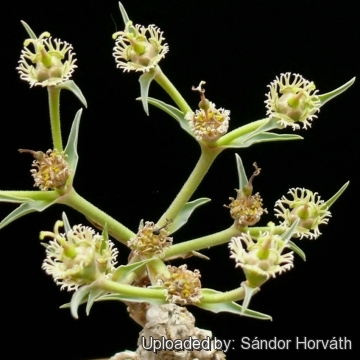 Euphorbia trichadenia Photo by: Sándor Horváth
Euphorbia trichadenia Photo by: Sándor Horváth Euphorbia trichadenia Photo by: © Plantemania
Euphorbia trichadenia Photo by: © Plantemania Euphorbia trichadenia Photo by: Xero Sicyos
Euphorbia trichadenia Photo by: Xero Sicyos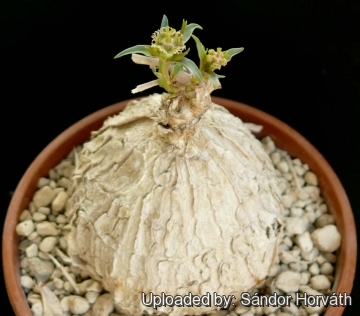 Euphorbia trichadenia Photo by: Sándor Horváth
Euphorbia trichadenia Photo by: Sándor Horváth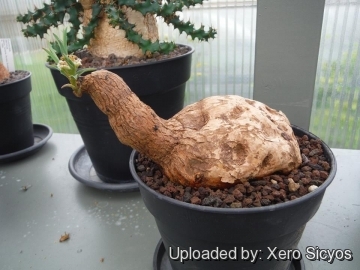 Euphorbia trichadenia Photo by: Xero Sicyos
Euphorbia trichadenia Photo by: Xero Sicyos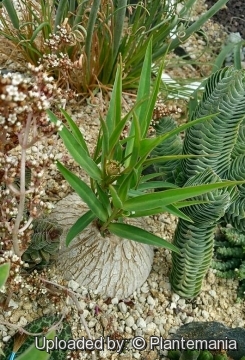 Euphorbia trichadenia Photo by: © Plantemania
Euphorbia trichadenia Photo by: © Plantemania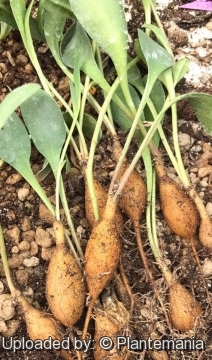 Euphorbia trichadenia. Seedlings. Photo by: © Plantemania
Euphorbia trichadenia. Seedlings. Photo by: © PlantemaniaCultivation and Propagation: A most desirable species cultivated without difficulty.
Your Photos

by © Plantemania




















